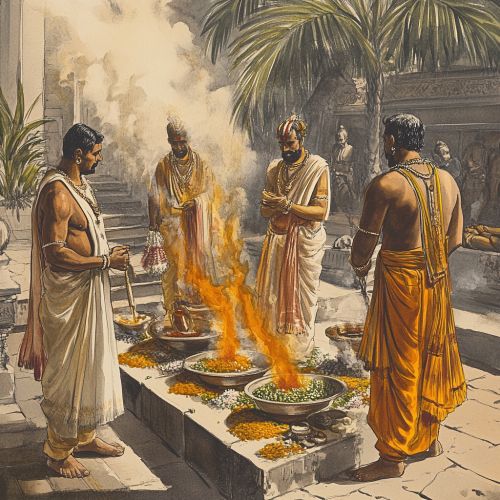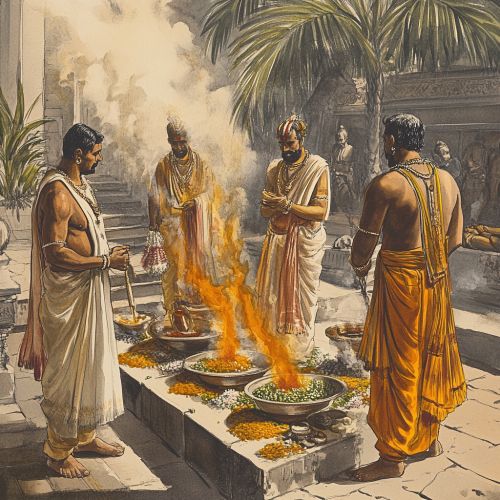Ancient Indian Literature
Ancient Indian Literature
Ancient Indian literature encompasses a vast and diverse body of texts that span thousands of years, reflecting the rich cultural, religious, and philosophical heritage of the Indian subcontinent. This literature is primarily written in several classical languages, including Sanskrit, Pali, Prakrit, and Tamil. The works range from sacred scriptures and epic poetry to philosophical treatises and classical dramas.
Vedic Literature
The earliest phase of ancient Indian literature is the Vedic period, which dates back to around 1500 BCE. The primary texts of this period are the Vedas, a collection of hymns, prayers, and rituals dedicated to various deities. The Vedas are divided into four main collections:
- **Rigveda**: The oldest of the Vedas, consisting of hymns dedicated to various deities.
- **Samaveda**: A collection of melodies and chants used in rituals.
- **Yajurveda**: Contains prose mantras and verses for ritual purposes.
- **Atharvaveda**: Includes hymns, spells, and incantations for everyday life.
The Vedic literature also includes the Brahmanas, which are prose texts that explain the rituals and ceremonies described in the Vedas, and the Aranyakas and Upanishads, which are philosophical and mystical texts exploring the nature of reality and the self.


Epic Literature
Ancient Indian epic literature is dominated by two monumental works: the Mahabharata and the Ramayana.
- **Mahabharata**: Attributed to the sage Vyasa, the Mahabharata is one of the longest epic poems in the world, consisting of over 100,000 verses. It narrates the story of the Kurukshetra War between the Pandavas and the Kauravas, interwoven with numerous subplots and philosophical discourses, including the Bhagavad Gita.
- **Ramayana**: Attributed to the sage Valmiki, the Ramayana consists of around 24,000 verses. It tells the story of Prince Rama's quest to rescue his wife, Sita, from the demon king Ravana. The Ramayana is not only a tale of heroism and adventure but also a moral and ethical guide.
Classical Sanskrit Literature
The period following the Vedic age saw the flourishing of classical Sanskrit literature, which includes a wide array of genres such as poetry, drama, and prose.
- **Poetry**: The Kavya tradition of classical Sanskrit poetry is exemplified by works such as Kalidasa's "Meghaduta" (Cloud Messenger) and "Raghuvamsa" (Dynasty of Raghu). Kalidasa is often regarded as the greatest poet and playwright in Sanskrit literature.
- **Drama**: Classical Sanskrit drama reached its zenith with the works of Kalidasa, such as "Shakuntala" and "Vikramorvashi". Other notable playwrights include Bhasa, Shudraka, and Bhavabhuti.
- **Prose**: Prose literature in classical Sanskrit includes works like the "Panchatantra" and "Hitopadesha", collections of animal fables and moral stories.
Pali and Prakrit Literature
Pali and Prakrit are ancient Indian languages that were used extensively in Buddhist and Jain literature.
- **Buddhist Literature**: The Tripitaka, also known as the Pali Canon, is the primary scripture of Theravada Buddhism. It consists of three "baskets" (pitaka): the Vinaya Pitaka (monastic rules), the Sutta Pitaka (discourses of the Buddha), and the Abhidhamma Pitaka (philosophical and doctrinal analysis).
- **Jain Literature**: Jain texts are primarily written in Prakrit languages, including Ardhamagadhi and Sauraseni. The Agamas are the canonical scriptures of Jainism, containing the teachings of Mahavira.
Tamil Literature
Ancient Tamil literature, also known as Sangam literature, dates back to the early centuries of the Common Era. It is a rich corpus of poetry and prose that reflects the social, political, and cultural life of ancient Tamil society.
- **Sangam Poetry**: The Sangam corpus consists of over 2,300 poems attributed to various poets. These poems are divided into two categories: Aham (love) and Puram (war and public life). Notable anthologies include the "Ettuthokai" (Eight Anthologies) and the "Pattupattu" (Ten Idylls).
- **Tirukkural**: One of the most celebrated works of Tamil literature is the "Tirukkural" by Tiruvalluvar. It is a collection of 1,330 couplets that provide ethical and moral guidance on various aspects of life.
Philosophical and Scientific Literature
Ancient Indian literature also includes a vast body of philosophical and scientific texts.
- **Philosophical Texts**: The six orthodox schools of Hindu philosophy—Nyaya, Vaisheshika, Samkhya, Yoga, Purva Mimamsa, and Vedanta—have produced extensive literature. Key texts include the "Nyaya Sutras" of Gautama, the "Yoga Sutras" of Patanjali, and the "Brahma Sutras" of Badarayana.
- **Scientific Texts**: Ancient Indian scholars made significant contributions to various fields of science. The "Aryabhatiya" of Aryabhata and the "Surya Siddhanta" are important astronomical texts. The "Charaka Samhita" and "Sushruta Samhita" are foundational texts of Ayurveda, the traditional Indian system of medicine.
Influence and Legacy
Ancient Indian literature has had a profound influence on the cultural and intellectual history of India and beyond. The themes, motifs, and literary styles developed in these texts have inspired countless works of literature, art, and philosophy across Asia and the world.
The translation and study of ancient Indian texts have also played a crucial role in the development of Indology, the academic study of Indian culture, history, and languages.
